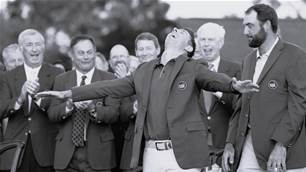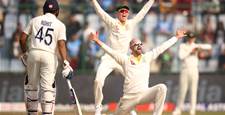The founder and coach of the Harlem Globetrotters did much more than bring flashy basketball to the white masses.
The founder and coach of the Harlem Globetrotters did much more than bring flashy basketball to the white masses.
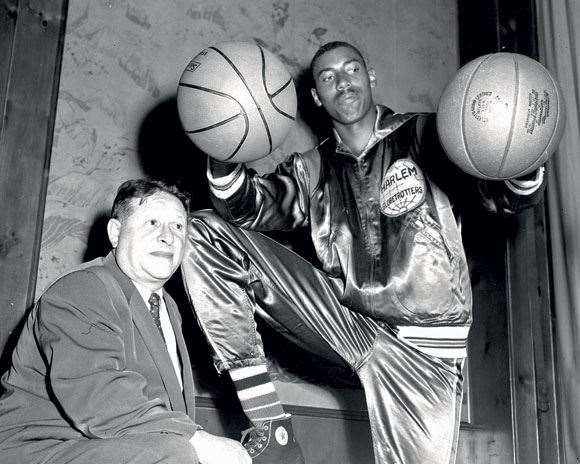 Team manager Abe Saperstein trotted the globe with Wilt Chamberlain
Team manager Abe Saperstein trotted the globe with Wilt Chamberlainin 1958. Image: Getty Images
Whether Abe Saperstein was a humanitarian or just an astute businessman, a civil rights campaigner or a Svengali, he, more than any individual in sports history, made African-Americans mainstream. Saperstein, born in London in 1902 to a Jewish family, was founder and coach of the Harlem Globetrotters.
When the Giles Post (a team formed at Chicago’s Wendell Phillips High School in 1926) was founded to compete in the Negro American Legion League, it was spotted by Saperstein and renamed the Savoy Big Five, after the newly opened Savoy ballroom, which hosted exhibition games and dances. The Savoy would sponsor his team, and in return, they would draw crowds.
At first the team, despite its 101-6 record, was widely ignored. After a year, Saperstein changed the team’s name to the Harlem, New York, Globetrotters,
then shortened it to the name it still has.
There’s no doubt Saperstein was a great marketer. Already a pioneering entrepreneur in the “black” baseball leagues, he chose the cradle of American Black expression, Harlem, as the name for his Globetrotters, despite the fact that most of them were from Chicago ‒ and had barely been anywhere else! That, combined with the whistled theme song Sweet Georgia Brown, would arouse modern sensibilities with suspicions of racism, but in 1927 the Harlem Renaissance, that flowering of black creativity, had only recently taken place. The association was a brilliant stroke.
In 1928 and 1929, Saperstein found it hard to unearth opposition. Determined to draw crowds, he conceived the style that made them world-famous, built upon the razzle-dazzle dribbling and shooting talents of Albert “Runt” Pullins and natural showmanship of Inman Jackson.
But they were a black team in a white world with a “Jim Crow” mentality, which caricatured blacks as gormless and lazy. White people were happy to see them depicted that way for their entertainment. Even the Globetrotters’ brilliance somehow reinforced those prejudices.
In 1948, after years of seeing his team beat YMCA and industrial league teams, and the odd NBL side, and win the “world” championship and International Cup, Saperstein approached Max Winter, owner of the all-white Minneapolis Lakers. Basketball was drawing meagre crowds. It was an offer Winter couldn’t refuse. This was the Globetrotters’ “Jackie Robinson” moment. The previous year, Robinson became the first black man to play major league baseball. The Globetrotters won a thriller when Ermer Robinson sank a last-second 30-footer. Certain media played it down, focusing on the fact that George Mikan, the Lakers’ captain, beat “Goose” Tatum in their one-on-one contest. But the game drew the biggest crowd ever to watch a pro game in Chicago. Two years later, in 1950, the newly formed NBA drafted the first black American player, Chuck Cooper, and the floodgates opened.
Ironically, this threatened the Globetrotters as a serious competitive unit, as they now had trouble recruiting. Saperstein ramped up the act. The Globetrotters went about their business of changing the way the game was perceived forever. In 1951, Saperstein took them on the road, and a triumphant world tour cemented their reputation as untouchables; too good for the leagues. It also secured their standing as “goodwill ambassadors” in US-hostile countries.
The Globetrotters gradually worked more comic routines into their act. Their boundlessly skilful ball work is now the standard by which basketball is judged. Frowned upon by civil rights activists in the USA, who believed militancy to be the only valid expression of black identity, they were defended by Martin Luther King, who could see that their style of playing was anything but an expression of black inferiority or “Uncle Tomism”.
Saperstein was an innovator in many ways. In 1961-63, after being denied a team in the NBL when he’d propped them up with double-headers featuring the Globetrotters, the disenchanted Saperstein formed the short-lived ABL, during which time the three-pointer was instituted, making the game even more exciting.
The Harlem Globetrotters continued touring, playing in front of 120 million live fans, winning over 23,000 games, with around 400 losses. Among the alumni who went on to competitive fame were Magic Johnson, Kareem Abdul-Jabbar and Wilt Chamberlain.
Saperstein toured with them until his death in 1966. The Globetrotters returned to competitive basketball after Mannie Jackson took over ownership in 1993. They remain an entertainment juggernaut, but more importantly, they took basketball to a world largely ignorant of it outside the USA, and put an entirely new stamp on black identity.
‒ Robert Drane
Related Articles
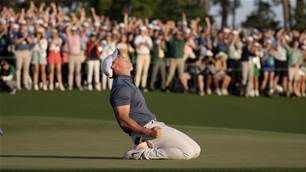
Feature Story: Moving the Needle
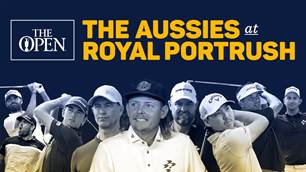
The Aussies at The Open
